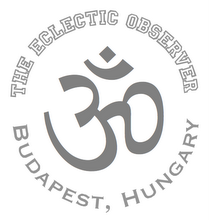by Miklós Tassi

The most varied shire of Hungary is Nógrád (Nograd). This region is located in the northern part of the country. The hilly panorama of the Cserhát mountain and the valleys of three rivers (Ipoly, Galga, Zagyva) are coloured by pristine villages, historical towns and the ruins of castles from the 14-16th centuries.
Mary Kormosói, the foreigners’ favourite road manager and tourist guide invites us to a small village in this wonderful scenery.
TM: You often design and organise weekend trips for foreign tourists. What is the program of these trips?
Mary K.: We visit the village of Hollókő. Through the trip we introduce the region, traditionally called Palóc Land, and the history and traditions of the inhabitant Palóc folk.
TM: How far is this place from the capital?
Mary K.: The village is located among the Cserhát hills about 100 km (north? South? East? West? Northwest?) of Budapest. The history of the village goes back to the 13th century, when after the Mongol invasion the castle was built on the top of the rock here.
TM: The name of the village sounds very interesting. Where does it come from?
Mary K.: The old Hungarian settlements are usually called either after the name of their founding tribe (sometimes their leader) or there is a legend behind the name. The name Hollókő (holló=raven, kő=stone) comes, perhaps, from the legend in which the lord of a castle stole a pretty maiden, whose nurse was a witch. The witch sent ravens that took the stones of the lord’s castle away and rebuilt it on the top of this rock. So the lord is forced to climb the rock each time he returns to his castle.
TM: Is the lord’s climb part of the program?
Mary K.: Yes, but it’s possible only in nice weather. The ruins of the castle are rich in rock carving, and this year we have an exhibition of the remains of weapons found here. There is a beautiful view over the surrounding protected area, which is a part of the Bükk National Park.The village is even more attractive than the ruins of the castle. In 1987 the UNESCO Committee gave it the title of 'World Heritage', paying tribute to the unique harmony of constructed and natural scenery. The houses represent a unique style of architedture. The gentle arms of the nearby chain of hills have always protected the tiny houses from the winds of centuries, making it possible for the village to keep its original charm. Parts of the settlement have however burnt down several times, because the buildings are covered with flammable thatched roofs.
TM: Would you call Hollókő an outdoor museum?
Mary K.: It’s more than an outdoor museum, because the houses are still in use. There is a working post office, a nursery school and a church. The people living here are members of the Palóc ethnic group and they preserve not only their ancient traditions, but their richly decorated folk clothes, too. Even the young generations wear these colourful clothes. Their old ladies love tourists, and tourists love them for their hospitality and beautiful songs.
TM: And they also cook well! Is the sweet-smelling dinner part of the program?
Mary K.: Of course it is! They provide traditional meals of Northern Hungary.
TM: You mentioned the church. Is it a shrine?
Mary K.: Yes, it is. There are written documents mentioning Hollókő’s first stone church from 1343, but the mediaeval building was destroyed during the Otoman raids at the end of the 16th century. The Roman Catholic church you find now in the centre of the village was built in the 19th century. It has stone foundations, adobe walls and a wooden spire. The main sights of the church are the statue of piety (from the 18th century, made of wood, it is considered folk art from the area of the present Slovakia) and presents from the Esztergom Museum of Christianity: a flag and a crusifix, also dating back to the 18th century.
TM: After the walk in the village, you suggested to me a tour in the nearby forests.
Mary K.: Even the natural surroundings of the old settlement are special and are also protected. The Hollókő Nature Conservation Area (141 hectares) includes old vineyards, the pasture lands and fields around the castle, the small woods next to the castle and the inner area of the old village.
TM: What are your expectations and plans for this season?
Mary K.: This summer we plan to have evening concerts in the castle. Around Easter some programs and performances will show and explain folk traditions. Year in year out more folk artists sell their products, and they always present the methods and primary commodities of their work. In 2006 the number of visitors exceeded all expectations. I hope this year to greet even more tourists in Hollókő.
TM: Thank you very much.
View a selection of village photos by clicking below.

8 comments:
Seems like a good place to go when the weather gets better.
I like the style of a dialogue, it is always good to ask questions. You pionted out the questions that anyone would be interested in and the ptoho album is great as well.
excellent style of writing and very very informative,i have really learnt a lot from this article,thanks so much.cheers
why is the video is not available anymore????
This interview is a good one, it is well constructed and perfectly carried out.
This is a great article! I am always looking for new places to go especially within Hungary. I also think it is neat b/c i know you spoke in hungarian and translated it to english. well done!
the questions were smartly choosen!
Boma said...
I like this article. More importantly because of the first hand truth that is revealed as a personal experience. I enjoyed the histories and comment that it is a trip worthy of embarking on.
Post a Comment